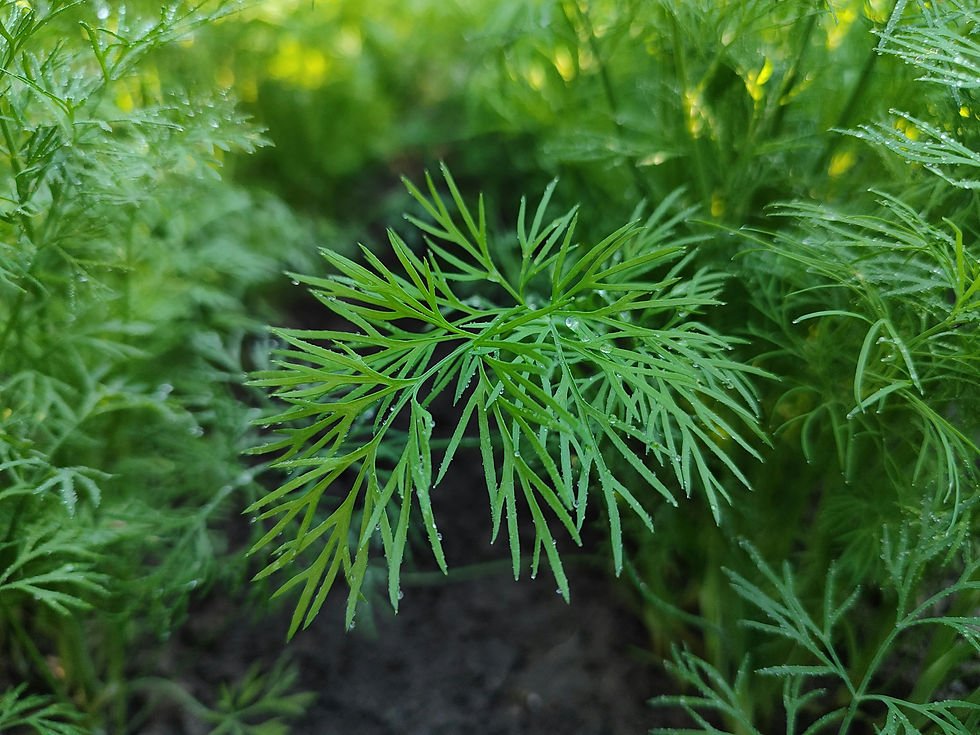Seed Trays for Gardens & Farms; A no Fail Guide to Starting Seeds and Seedlings
- Jhoanna Marie Y. Negrite

- Jul 25, 2023
- 6 min read
Updated: Aug 29, 2023

Having a successful farm or garden starts with proper planning and preparation, and that includes choosing the right tools and supplies. One of the most important tools for starting plants is the seed tray.
There are several types of seed trays available, and each one has its own benefits and uses. In this article, we will explore the different types of seed trays and how to use each of them effectively.
ADVANTAGES TO STARTING SEEDS IN CELL TRAYS VS. LARGER POTS OR SOIL BED?
Starting seeds in cell trays, especially in the larger ones, gives the grower the advantage of being able to start more seedlings in their growing space. This is especially handy for row crops where the grower may want to plant 100 or more of each variety.
Growing this many seedling starts in larger seed pots would take up way too much space. The other advantage is that you will waste less growing media starting out your seeds and then up-potting the successfully germinated starts into new pots.
PARTS OF A SEED TRAY
There are two basic parts to a seed tray, one of which is optional:
Tray – this is the top part that holds soil, individual containers (pots), or a cell flat. When used with a cell flat, the tray is used for watering from below.
Cell flat (plug flat) – this is the optional lower part. This is the part that holds the water to keep you from watering the seedlings very frequently.

TYPES OF SEED TRAYS
Seedling trays come in different forms, including mesh seed trays, solid seed trays with drainage holes, and solid seed trays without drainage holes (leak-proof seed trays).

Mesh Seed Trays
A mesh seed tray is a type of seed tray that allows air, water, and light to pass through it while also providing support and protection to seedlings as they grow. It typically consists of a frame made of durable plastic or wire mesh, with a tray or pot placed inside it to hold the soil and seeds.
Mesh seed trays are specifically designed for seed starting, and they are often used in commercial and home gardens to start seedlings before transplanting them into larger containers or into the ground. They are also commonly used for microgreen production, which is the practice of growing germinated seeds into small, edible plants that are harvested a few weeks after germination.
By allowing air, water, and light to pass through, mesh seed trays help to reduce the risk of damping off, a disease that can kill young seedlings. They also allow for better drainage, reducing the risk of root rot and other diseases associated with overwatering.
Where to buy:

Cell Seed Tray
A cell seed tray is composed of small, individual cells, each of which is typically about 5 to 10 millimeters wide, long, and deep. The cells are arranged in a grid-like pattern, with rows and columns, and they're separated from each other by small walls. Cell seed trays are often used for growing seedlings, particularly when growing crops in a commercial setting.
Cell seed trays are beneficial because they allow for efficient and convenient seedling production.
The small cells allow for even distribution of water and nutrients to the sprouts, and they provide a secure and stable base for the seedlings to grow and mature. This makes it easier to transplant them into larger containers or directly into the ground, and it decreases the risk of damage to the seedlings.
Overall, cell seed trays are a versatile and efficient tool for growing seedlings and they're a popular choice for commercial growers or those who want to start their own miniature farm.
Where to buy:

Solid Seed Trays with Drainage Holes
Solid seed trays with drainage holes allow for adequate drainage, making them suitable for planting multiple seeds together in one place.
The drainage holes prevent the soil from becoming saturated with water and promote healthy root growth. However, the lack of individual cells makes it impossible to move seedlings to separate containers once they grow larger.
Where to buy:

Solid seed trays without drainage holes
Solid seed trays without drainage holes (leak-proof seed trays) do not allow for any drainage at all. They are best used for holding cell flats and allowing for bottom watering. By holding water, the tray can be used to catch excess water from watering seeds, or to water seeds from below.
WHERE TO BUY:

Seed Tray With a Humidity Dome
A seed tray with a humidity dome is a growing system that provides an ideal environment for seed germination and early plant growth. It consists of a seed tray, which is a tray with small, individual cells or pots, and a humidity dome, which is a clear plastic cover that fits over the tray.
The humidity dome creates a warm, moist environment that is essential for seed germination and early plant growth. The cover traps moisture and moisture-laden air around the seedlings, providing them with a consistent supply of water. This can be particularly beneficial during dry periods or when the air is particularly dry.
Seed trays with humidity domes are particularly useful for growing plants that require a warm and humid environment, such as tomatoes, peppers, and other vegetables. They are also popular for growing herbs, flowers, and other outdoor plants.
WHERE TO BUY:

Biodegradable Seed Trays
Biodegradable seed trays are the environmentally friendly solution to traditional, plastic seed trays.
Instead of being made from synthetic materials that can take hundreds of years to decompose, biodegradable seed trays are made from natural materials such as recycled paper, biodegradable plastic, or plant-based materials.
These innovative trays provide all the benefits of traditional seed trays, including protection for seedlings and support for roots, but with the added bonus of being gentle on the environment. Biodegradable materials are non-toxic and they won't pollute the soil or water systems when they're discarded.
Biodegradable seed trays are a great choice for gardeners who want to reduce their environmental impact while still nurturing their plants. They're also an excellent choice for commercial growers who need to minimize their waste output and meet sustainability goals.
WHERE TO BUY:

Ergonomic Pop-out Seed Tray
An ergonomic pop-out seed tray is a growing tray designed for the comfort and productivity of gardeners.
Soft food-grade silicone cells cradle seedlings and gently flex to pop out when it’s time to transplant into your outdoor garden! This system is specially designed to reduce stress on your seedlings, so you don't damage their roots. After transplanting, trays are easy to clean and reuse or simply store for next growing season. Top shelf dishwasher safe.
The tray is made from lightweight, durable materials that are easy to clean. These trays are a popular choice among commercial growers and home gardeners who want to maximize their seedling production while minimizing their physical strain.
Where to buy:
SO WHAT KIND OF TRAY SHOULD YOU USE?
Quickly review some of these seed starting questions.
Are you growing a large number of one variety of plants for transplanting row crops?
Are you planting smaller numbers of a wide variety of plants?
Will you be planting your crops all at once, or will you be using the succession planting method?
What type of seeds will you be planting? Peppers, tomatoes, lettuce, watermelon, etc.?
How large are the seeds?
How long will your seedlings need to stay in the cell trays?
Will you be potting up your plant starts or planting out directly from the plug trays?
How much protected growing space do you have to start seeds in?
Will you use a heat mat or a dome or rely on ambient temperatures and humidity for germination?
HOW LONG CAN PLANTS STAY IN THE CELL TRAY?
Most seedlings can stay in cell trays for at least 4 weeks. The larger the cell volume, the longer a plant can grow before it becomes root-bound.
Plants grown in a 200 cell tray will typically need to be potted up or transplanted outside once they have a full set of true leaves. Plants grown in a 32-cell insert pot can be kept in protected conditions for 6-8 weeks.
Plastic Seed Trays Plastic seed trays are one of the most popular types of trays for starting plants. They are lightweight, durable, and easy to clean. They come in a variety of sizes and shapes, and are a budget-friendly option.
WATERING TIP
Yes. It is possible to overwater seedlings growing in cell trays. A common mistake growers make though is to leave water in the bottom of a plug tray at all times. This will eliminate your seedling’s ability to get oxygen.
Bottom-watering can be properly done by adding just enough water to allow the cell tray to evenly absorb it during the watering and no more. You want to discard the excess water as it will become stagnant and invite anaerobic bacteria to wreak havoc on your newly established seedlings.
































Comments